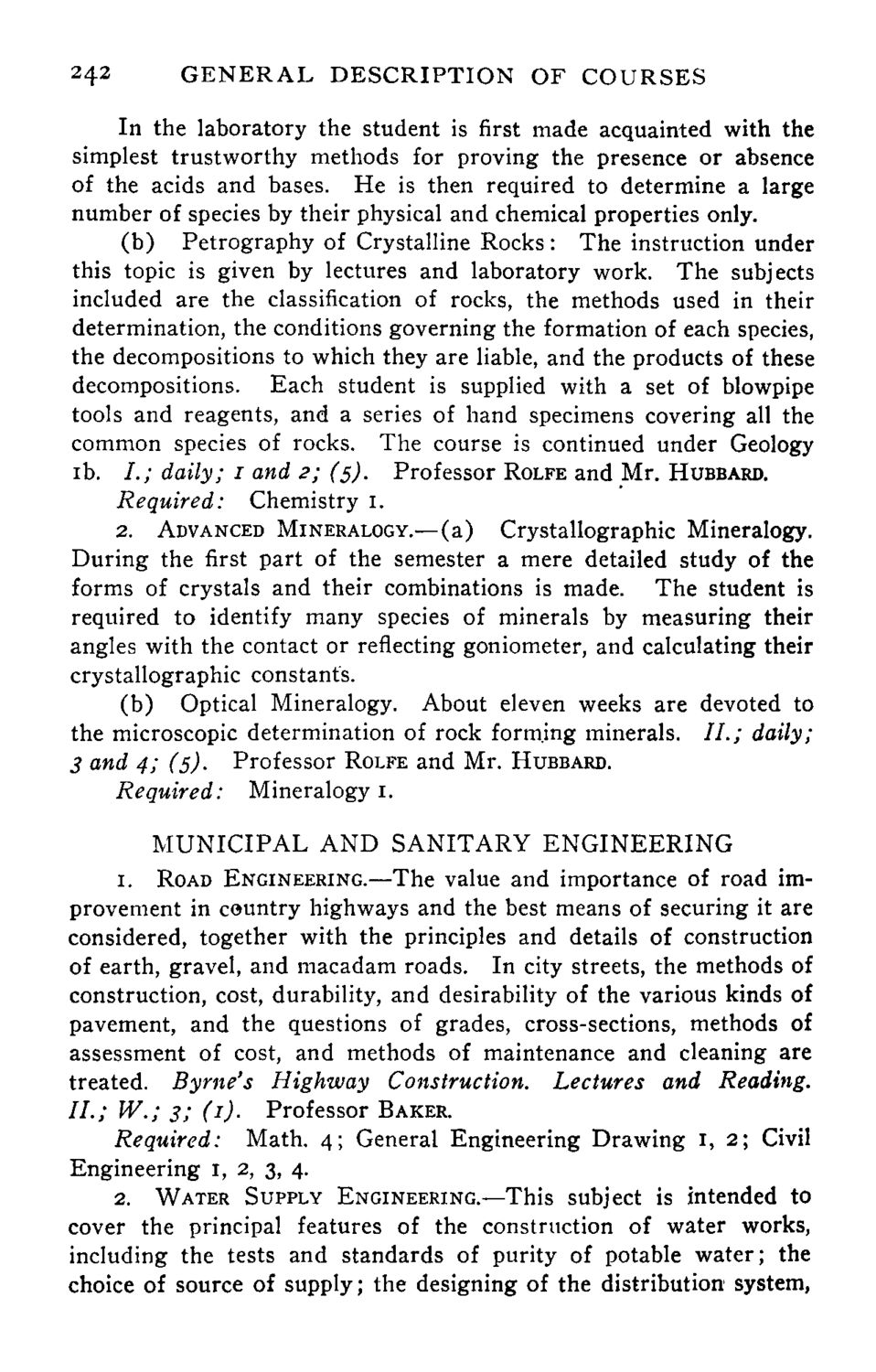Caption: Course Catalog - 1899-1900
This is a reduced-resolution page image for fast online browsing.

EXTRACTED TEXT FROM PAGE:
242 GENERAL DESCRIPTION OF COURSES In the laboratory the student is first made acquainted with the simplest trustworthy methods for proving the presence or absence of the acids and bases. He is then required to determine a large number of species by their physical and chemical properties only. (b) Petrography of Crystalline Rocks: The instruction under this topic is given by lectures and laboratory work. The subjects included are the classification of rocks, the methods used in their determination, the conditions governing the formation of each species, the decompositions to which they are liable, and the products of these decompositions. Each student is supplied with a set of blowpipe tools and reagents, and a series of hand specimens covering all the common species of rocks. The course is continued under Geology ib. / . ; daily; 1 and z; (5). Professor ROLFE and Mr. HUBBARD. Crystallographic Mineralogy. Required: 2. Chemistry 1. ADVANCED MINERALOGY.'—(a) During the first part of the semester a mere detailed study of the forms of crystals and their combinations is made. The student is required to identify many species of minerals by measuring their angles with the contact or reflecting goniometer, and calculating their crystallographic constants. (b) Optical Mineralogy. About eleven weeks are devoted to the microscopic determination of rock forming minerals. / / . ; daily; 3 and 4; (5). Professor ROLFE and Mr. HUBBARD. Required: Mineralogy 1. MUNICIPAL AND SANITARY ENGINEERING 1. ROAD ENGINEERING.—The value and importance of road improvement in country highways and the best means of securing it are considered, together with the principles and details of construction of earth, gravel, and macadam roads. In city streets, the methods of construction, cost, durability, and desirability of the various kinds of pavement, and the questions of grades, cross-sections, methods of assessment of cost, and methods of maintenance and cleaning are treated. Byrne's Highway Construction. Lectures and Reading. II.; W.; 3; (1). Professor BAKER. Required: Math. 4; General Engineering Drawing 1, 2; Civil Engineering 1, 2, 3, 4. 2. WATER SUPPLY ENGINEERING.—This subject is intended to cover the principal features of the construction of water works, including the tests and standards of purity of potable water; the choice of source of supply; the designing of the distribution system,
|